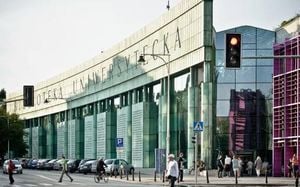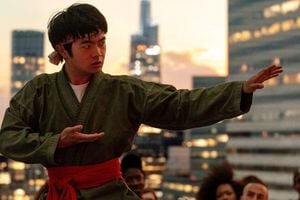Grief and outrage have echoed throughout Mexico City following the shocking murder of Milton Morales Figueroa, the chief of police intelligence operations, just days after the brutal slaying of an Indigenous activist and his family. The killings underscore a troubling pattern of violence that has left communities shaken and exposed the dangerous undertow of crime that has gripped the nation.
On a Sunday that was meant to be spent with family, Figueroa was ambushed in Coacalco, a municipality situated a mere 22 miles north of the bustling Mexican capital. Eyewitnesses watched in horror as he was shot multiple times by assailants in SUVs, while he reportedly stood outside a poultry store with relatives. The police chief, entrusted with tackling organized crime, succumbed to his injuries on the spot, highlighting the risks faced by those in law enforcement today.
Local authorities have reacted swiftly to the tragedy. Security Secretary Pablo Vazquez took to social media to condemn the violence, promising to identify and capture those responsible for Figueroa’s death. “Milton was in charge of important investigative tasks to protect the peace and security of the residents of Mexico City,” Mayor Marti Batres also reiterated, sharing his heartfelt condolences.
This heinous act comes amidst a backdrop of escalating violence against public figures in Mexico, which has seen over 450,000 homicides since an aggressive military campaign against drug cartels was initiated in 2006. The spate of violence reflects the deep-seated issues plaguing the country, as criminal organizations continue to exert their power over local authorities and communities.
Just three days prior to Figueroa's murder, Lorenzo Santos Torres, a 53-year-old Indigenous rights defender, and his family were brutally gunned down. They were ambushed while traveling in a pickup truck in Oaxaca, where assailants opened fire before igniting the vehicle with the family inside. This tragic incident has been viewed as a potential revenge attack, stemming from Torres's unrelenting advocacy for the rights of Indigenous peoples, a stance that had made him a target of violence.
“We condemn the violent way in which the crime was committed,” stated state prosecutor Bernardo Rodriguez Alamilla, categorizing the attack as particularly cruel and barbarous. Torres had been a prominent figure in the fight against injustices, particularly those linked to land rights and the actions of corrupt municipal authorities. Sadly, his death is just one in a long line of targeted killings of activists who dare to voice dissent.
Activists in Mexico continue to face inhospitable conditions, often risking their lives to fight for the oppressed. Organizations monitoring human rights in the region have reported an alarming rise in attacks against activists, with many voicing concerns over a chilling atmosphere that inhibits activism and accountability. The current state of play suggests a compounding crisis that intertwines criminality with systemic corruption.
The realities of life in Mexico are painted starkly with the grim phrase “plata o plomo,” which translates roughly to “silver or lead”—the ultimatum often offered to police officers by drug cartels, leaving them with an unenviable choice between ensnarement or extermination.
In recent years, various government initiatives to curb violence have emerged, including President Andrés Manuel López Obrador’s controversial mantra, “Abrazos no Balazos,” meaning “Hugs, not Bullets.” This strategy advocates for addressing the root socio-economic issues that lead individuals to crime as opposed to engaging in armed confrontations with criminal factions. Critics, however, suggest that this approach might embolden cartels, allowing them to operate with increased impunity.
Figueroa and Torres’s murders expose a grim paradox in a nation cloaked in sorrow. As citizens mourn the loss of lives taken too soon, they are also driven to question the forces that allow such acts of violence to persist unchallenged. While law enforcement remains entrenched in a battle against organized criminal elements, the tenacity of activists striving for justice reveals a fraught but vital moral struggle within the country.
Despite the despair rooted in pervasive violence, there has been notable solidarity among communities, demanding justice for those wronged. Advocacy groups are amplifying calls for governmental accountability after each staggering loss, seeking to spotlight a narrative that oscillates between tragedy and resilience. The situation remains precarious, perched on the cusp of further conflict, yet the spirit of those who dare to stand against injustice endures.
As investigations into both Figueroa’s and Torres’s deaths unfold, their tragic stories serve as chilling reminders of the dangers faced by those who seek to foster safety and equity in a country grappling with its violent past and present. The heartbreaking loss of these individuals urges a national reckoning: how long will society tolerate the violence that stains its fabric, and what steps must be taken to ensure that those who protect and advocate for justice are not silenced?



